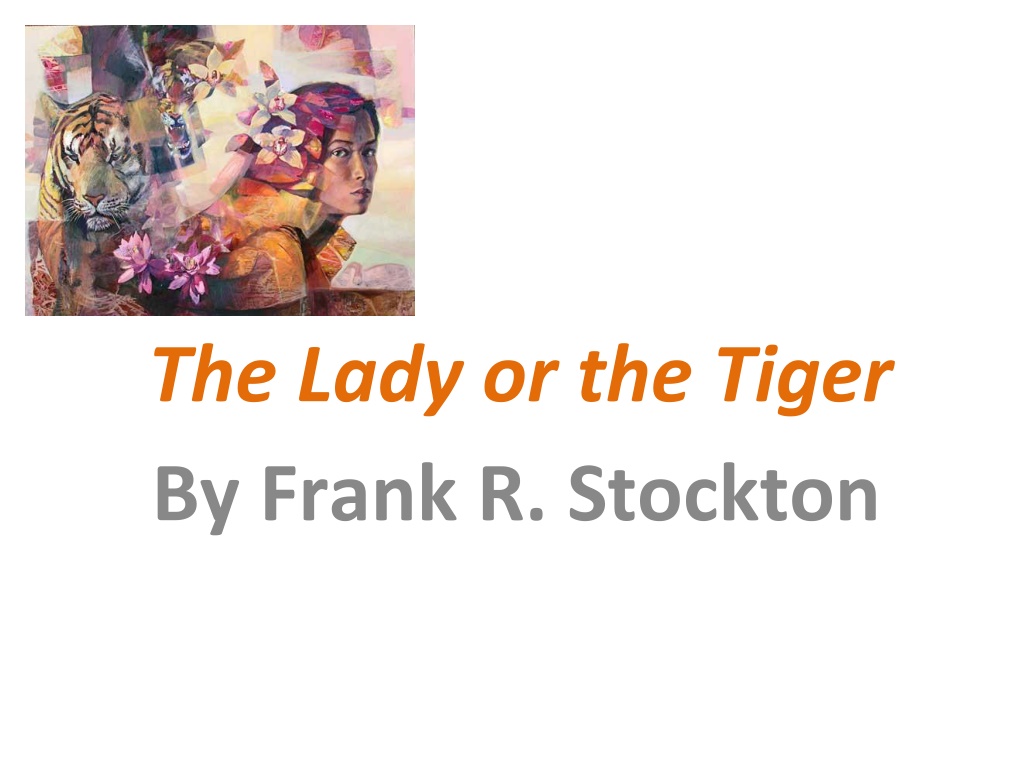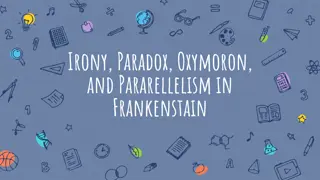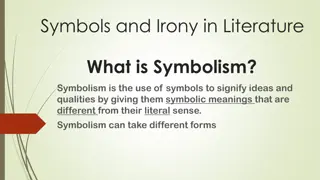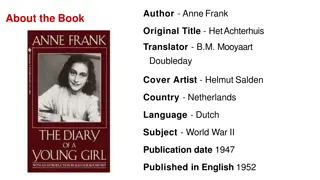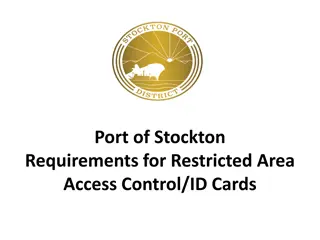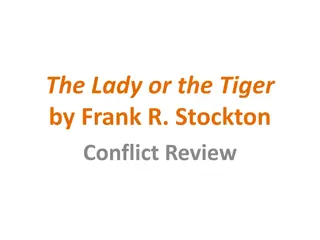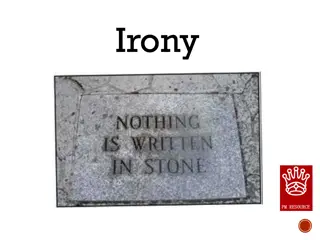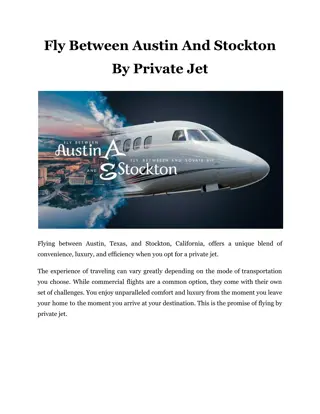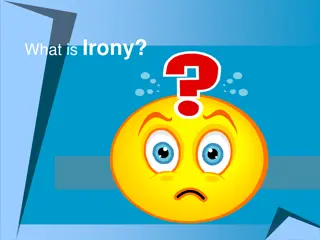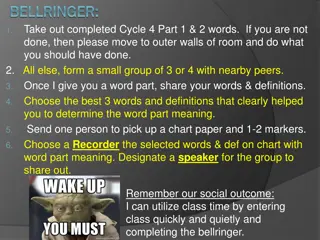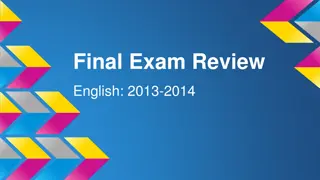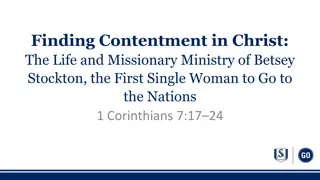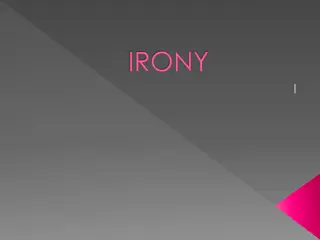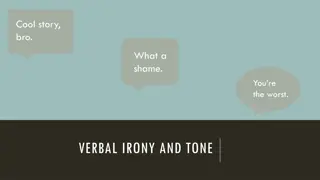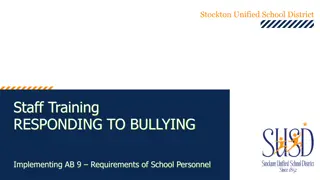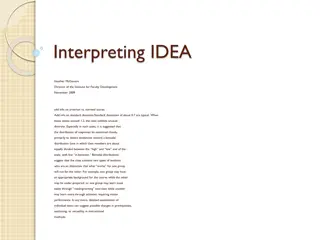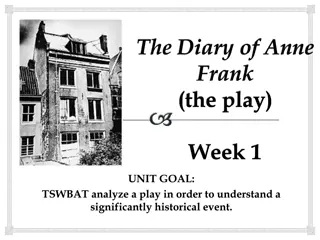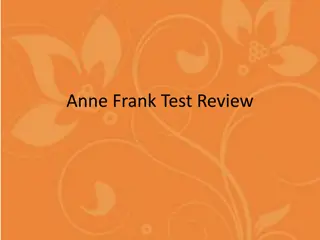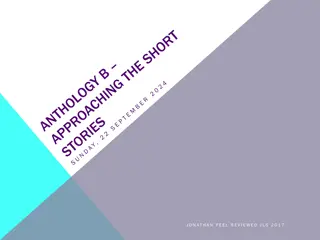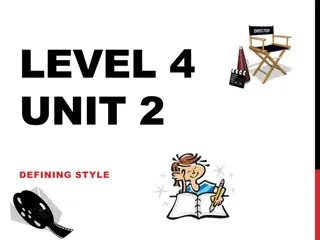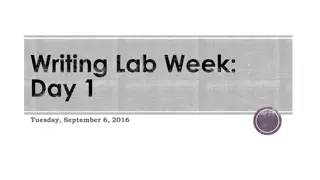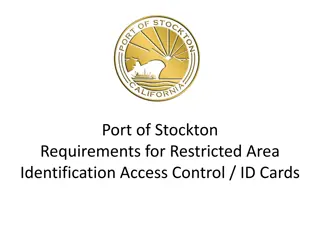Understanding Irony in Frank R. Stockton's Stories
Explore the concept of irony in the works of Frank R. Stockton, focusing on "The Lady or the Tiger" and "The Most Dangerous Game." Discover examples of verbal and situational irony in these stories, analyzing how the unexpected twists add depth to the narratives and engage readers.
Download Presentation

Please find below an Image/Link to download the presentation.
The content on the website is provided AS IS for your information and personal use only. It may not be sold, licensed, or shared on other websites without obtaining consent from the author. Download presentation by click this link. If you encounter any issues during the download, it is possible that the publisher has removed the file from their server.
E N D
Presentation Transcript
The Lady or the Tiger By Frank R. Stockton
Frank R. Stockton is the author of the short story, The Lady or the Tiger.
Frank R. Stockton 1. Noun author of the story. Published in 1882. Mainly wrote stories for children . This is not a true story. It is a work of fiction
Irony Identify types of irony by giving examples from The Most Dangerous Game, Be able to identify and record examples from the Story, The Lady or the Tiger after reading.
Irony Isn t it ironic? Don t you think? It s like a free ride when you already paid (Alanis Moresett).
Irony 3. A contrast or an incongruity (clash) between what is stated and what is meant (verbal), or between what is expected to happen and what actually does happen (situational).
Example It s ironic that Rainsford (a well known hunter) swims to an island to get hunted. It s not what you d expect. More specifically it s situational irony.
Verbal Irony 6. And 7. A writer, speaker, or narrator says one thing and means something entirely different.
Example The title of the story, The Most Dangerous Game which we expect a game to be fun, but this game is not fun.
Situational Irony 9 &10 A contrast between what is expected and what actually happens.
Examples Rainsford is an expert hunter who happens to swim a shore to be General Zaroff s most challenging hunt yet. The fact that he happens to be an expert hunter.
Dramatic Irony 12 and 13 The reader or audience perceives something that a character in the story or play does not know.
Dramatic Irony We know that Rainsford is hiding behind the curtain, but General Zaroff does not know.
Breaking the Fourth Wall 15. The author directly addresses the audience. The author does this when he leaves it up to the reader to decide.
Examples Malcolm in the Middle (TV. show) in the middle of the episode, he will speak directly to you, the audience. Frank R. Stockton page 36 (bottom of first column)
Characterization 19. The methods an author uses to develop a character. Direct: directly states the traits Indirect: when the author shows the traits
Foreshadowing 20. Clues that the author gives throughout the story to help develop the plot
Conflict A struggle between two opposing forces or points of view. There are two types (internal and external)
Internal When a character struggles with a force within themselves.
Internal Conflict Example The princess struggles with the decision to point to the direction of the door that contains a lady (the one lady that she is jealous of and hates the most), or she has to decide if she can stand watching her lover get attacked by a ferocious tiger. The princess struggles to overcome her jealousy!
Internal Conflict Example The young courtier (knowing the nature of the princess) has to decide whether or not to trust the princess.
External Conflict A struggle between a character and an opposing outside force. (person vs. person, person vs. fate, person vs. nature, person vs. God/gods, person vs. society)
External Conflict Man vs. man (courtier vs. semibarbaric king) Man vs. fate (courtier vs. trial s chance) Man vs. Society (courtier vs. audience acceptance of this form of judicial system) Man vs. Nature (courtier vs. tiger) Woman vs. Woman (pricess vs. fairest lady)
Exposition Beginning Introduction Establishes the setting, background information, possibly characters
Rising Action Events that lead to the climax
Complications Events/situations that add difficulty to solving/resolving the problem
Examples of Complications The doors look identical, can t hear, it s different every time, it s a 50/50 chance The woman behind the door is the fairest lady in the land and the one woman the princess hates The most ferocious tiger was chosen
Climax The princess points discretely to the right door (she know what is behind each one) The courtier opens the door
Falling Action Events that lead to the resolution or ending
Falling Action Something comes out of the door
Resolution The ending How the story ends...how the conflict/problems are resolved
Resolution Missing The author leaves it up to the reader! You decide if the courtier is devoured or married.
Resolution Missing The author leaves it up to the reader! You decide if the courtier is devoured or married.
